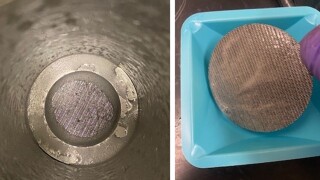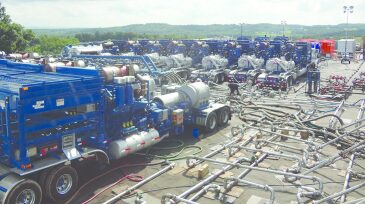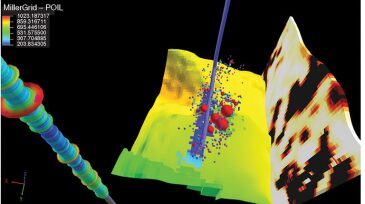Fracturing/pressure pumping
Technology developers expect the tight-oil industry to give lightweight proppants another look after the Permian Basin’s biggest operator becomes an adopter.
In this third work in a series, the authors conduct transfer-learning validation with a robust real-field data set for hydraulic fracturing design.
This paper describes development of a high-temperature water-based reservoir drill-in fluid using a novel synthetic polymer and customized with optimal chemical concentrations and sized calcium carbonate.
-
While many factors may influence fracture-height evolution in multilayer formations, the consensus is that the so-called “equilibrium height belonging to a certain treating pressure” provides an upper limit, at least for nonnaturally fractured media.
-
A new unconventional proppant technology—a rod-shaped proppant—delivered 25% higher oil per net pay compared with offset wells using conventional proppant.
-
A pair of inventive companies are working on a way to allow microseismic tests to visualize the otherwise silent process of propping fractures.
-
I am disappointed to see public opposition to hydraulic fracturing, because I think, for the biggest part, it is unfounded. It would be inaccurate to deny that there can be problems. But an objective look reveals that its benefits far outweigh its potential risks.
-
Developers of the latest generation of unconventional hydraulic fracturing models are hoping that current weak oil and gas prices will generate newfound interest in their software technology.
-
With the world’s fifth-largest estimated shale gas reserves, there is great potential for Saudi Arabia to replicate North America’s unconventional growth.
-
A strategic objective of Saudi Aramco is exploring and developing deep and unconventional gas reservoirs, many of which are considered extremely tight.
-
The surge in unconventional completions has created a substantial accumulation of previously hydraulically fractured wells that are candidates for hydraulic refracturing.
-
Most shale producers in North America have given little thought to the flowback stage following hydraulic fracturing. Others have come to realize it represents a valuable opportunity to learn more about their wells.
-
Researchers at Yale University who analyzed groundwater wells in the Marcellus Shale area have determined that hydraulic fracturing is highly unlikely to be a direct source of contamination.













